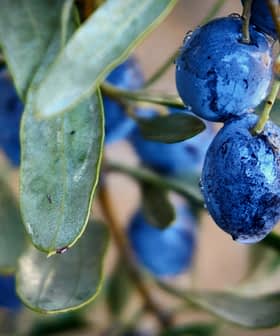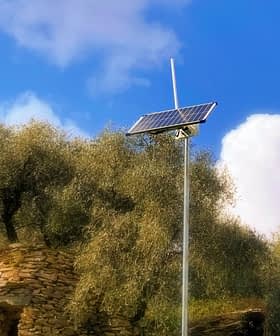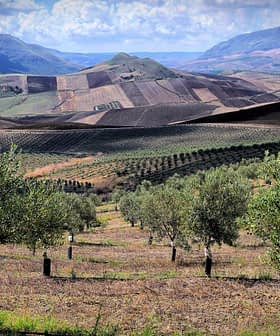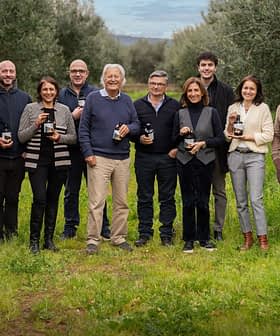Discovery of Ancient Olive Farming in Sicily Challenges Previous Beliefs
Researchers have discovered evidence of ancient olive farming in Sicily, 1,000 years earlier than previously thought, through pollen analysis and historical analysis.
Three thousand seven hundred years ago, olive farming was already taking place in Sicily, 1,000 years earlier than previously thought, as revealed by pollen analysis in the Pantano Grande area. The research suggests that knowledge of olive cultivation may have been brought to Sicily from the Levant through trade and cultural exchange, leading to the development of agronomic practices in the region during the Bronze Age.
Three thousand seven hundred years ago, ancient forms of olive farming were already taking place in Sicily, almost 1,000 years earlier than previously believed.
The revelation comes from analyzing pollen released by local vegetation over millions of years. By examining pollen-rich sediment layers, researchers were able to identify olive pollen among many other types.
There was no plow, none of the equipment we think of today. The possibility of cultivating and breaking the soil in a specific way simply wasn’t there.
That also allowed them to determine the point in time when olive pollen became predominant, showing clear signs of olive farming.
See Also:North Africans Ate Olives 100,000 Years Ago, Evidence SuggestsThe research investigated the contents of sediments in the Pantano Grande area, near Lake Ganzirri — a step away from the mythological turbulent streams of Charybdis and Scylla’s rocky caves in the Strait of Messina.
“It’s a very interesting area, as going through the strait allowed generations of seafarers coming from the West, the East and North Africa to access the Tyrrhenian Italian peninsula,” Jordan Palli, co-author of the study and researcher at the University of Tuscia’s ecological and biological sciences department, told Olive Oil Times.
Adding to that, researchers looked for evidence in that area since it is especially rich in biodiversity and also home to significant historical events.
“As it happens in all large water masses, all that is intercepted because of gravity precipitates and might become sediment,” Palli said. “Among these, there is pollen, which is a microscopic element produced in huge quantities by plants.”
The sediment column slowly and progressively accumulates material, producing uninterrupted stratification.
“Even more interestingly, it maintains a chronological sequence, as the lower layers are the most ancient. It becomes a natural archive,” Palli said.
Those sediments are rich in materials of many diverse origins, such as leaves, wood, fruits, fungi, or single-cell algae.
In Pantano Grande, wild olives were present, mixed with a wide range of Mediterranean vegetation.
“They have been there for a long time, until the human presence began reshaping most of the coastal areas,” Palli said.
To correctly distinguish wild olive pollen from pollen from olive trees in a human-driven environment, researchers developed two indices.
The first one focused on olive trees growing with the typical Mediterranean seaside vegetation. The second one considered olives sharing forested areas with oaks, such as holm oaks.
The two indices allowed researchers to determine vegetation trends in both settings.
“When the olive pollen predominance emerged in both indices, that was evidence of a significantly broader presence of the plant when compared to all other plants that should have co-existed there,” Palli said.
“This allowed us to interpret such data as the signal of artificial propagation of the plant, as its ecology would not have allowed it to have such predominance,” he added. “That told us that local populations had taken action.”
Such analysis led the researchers to identify three historical periods in which olive farming took place in the area.
While the second (during the Roman Empire) and the third (modern times) are well known and documented, the first identified period came as a surprise.
It stretches from the Middle Bronze Age, in the 18th century BCE, to the 12th century BCE.
Most historians have long agreed that knowledge about olive tree farming originated from the Aegean area, probably brought by Greek colonists to southern Italy around the 8th century BCE.
“We do not know much about the Sicans,” Palli said. “Their settlements are below modern cities, such as Messina. Some investigations showed that there is much to explore down there, but that cannot happen because of what is above it.”
Three thousand years ago, olive growing was already taking place in the Eastern Mediterranean.
The new research evidence shows that knowledge about the olive was probably carried to the Sicilian coasts by merchants coming from the Levant.
“There are archaeological remains of pottery and other objects originating from the Aegean area,” Palli said.
“Thanks to the archaeologists and other researchers who joined our research, we have been able to formulate a scenario of what has probably happened at that time in Pantano Grande,” he added.
See Also:Pottery Shards in Croatia Reveal Roman Olive Oil and Military HistoryIn that scenario, trade brought new knowledge through cultural exchange.
“Wild olives were already present in that area, and the local population began appreciating the natural resource,” Palli noted.
In the Levant, where more advanced civilizations thrived, olive oil and the olive tree were already highly significant.
Coming to Sicily from the Levant, merchants and seafarers might have noticed the many olive trees. Sharing knowledge ensued.
“We could say that agronomic know-how developed there, but we should always bear in mind that we are talking of ancient times, so we should not compare that knowledge to modern agronomics in any way,” Palli said.
“Let’s keep in mind that at the time, tools didn’t exist yet, they weren’t widespread,” he added. “There was no plow, none of the equipment we think of today. The possibility of cultivating and breaking the soil in a specific way simply wasn’t there.”
“When we talk about that very early phase of the Bronze Age, yes, we’re talking about cultivation, but not cultivation as we know it today,” Palli continued.
At that time, farmers could cultivate the olives in areas where they were already present.
“What they might have done was to look for areas where the tree was present or else favored the olive trees over the other plants in specific areas,” Palli said.
A crucial part of the research was the paleoclimate analysis, which allowed scientists to study climate variations over time.
“Times of expansion or regression of specific vegetation might depend on variations happening, for instance, on the relative humidity levels or the amounts of rainfall. Those variations might allow a species to better compete with the others,” Palli said.
By comparing the evidence of paleo-climatic variations as analyzed in previous research, there was no specific correlation with olive predominance.
“That showed us that the increasing volumes of olive pollen were not due to a specific climatic phase. That supported the hypothesis of the human intervention,” Palli said.
The ancient approach to olive farming in the Pantano Grande area lasted for five to six centuries.
“It collapsed in the 12th century BCE,” Palli said. “That does not mean that the knowledge collapsed as well, as populations could have moved to other areas.”
What researchers know is that around the 12th century, several significant events happened.
“The first impact came from the Ausoni population descending to Sicily from what is today central Italy. Archaeological remains show significant movements of people at the time,” Palli said.
That might have induced the Sicans to leave the area. According to researchers, random pirate-like activity began to occur along the Sicilian coasts at the time, likely carried out by populations who, over time, came to be identified as Saracens.
“Such activities could have easily impacted sea trade and even pushed populations away from the coasts,” Palli said.
Additionally, it is believed that Mount Etna, one of the world’s most active volcanoes, located 100 kilometers from Messina, had an enormous eruption at that time. Traces of this eruption were later found in Albania, approximately 600 kilometers away.
“Ancient Roman authors described it as an unparalleled deep upheaval, a generational event. It is called the Sican Event, as it is believed that it might have pushed Sicans from eastern Sicily to the western part of the island,” Palli said.
Thanks to pollen analysis, researchers verified that after that period, the predominance of olive pollen ceased, with sediment layers showing a return to a more typical condition of mixed plant species.
According to Palli, three years of analysis and two more years to write the research were needed to bring together the work of archaeologists, climatologists, historians, ecologists and paleoecologists.
“Without such collective work, we would not have been able to combine history, pollen, archaeology, sediment analysis, and paleo-climate and produce such evidence,” Palli concluded.
Share this article







